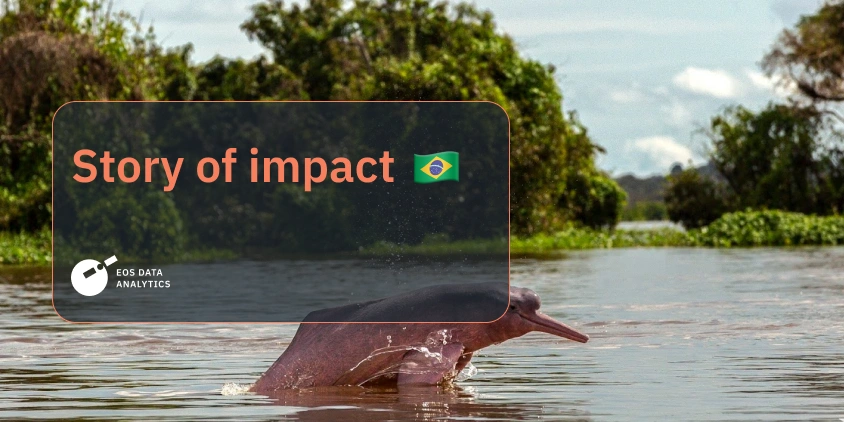
Amazon Heat Wave Claims 275 Dolphin Lives
The Amazon River, a lifeline of the world’s largest rainforest, faced a grave ecological crisis in late 2023. This tragedy unfolded with the discovery of 155 river dolphins found dead in Lake Tefé, followed by 120 dolphin mortalities in Lake Coari. This alarming sequence of events underscored the vulnerability of Amazon’s unique aquatic species and highlights the broader environmental issues of drought and temperature rise impacting the region’s delicate ecosystem.
As part of our commitment to using space technology for the preservation of life on Earth, we at EOS Data Analytics continue to develop our special stories of impact. In this investigation, we delve into the devastating incidents in both Lake Tefé and Lake Coari, exploring the circumstances leading to the demise of these majestic river dolphins. Through satellite data analytics, we aim to unravel the intricacies of this environmental crisis and illuminate the path forward for preserving the remaining dolphin population.
The Heart Of Biodiversity
Nestled within the vast, verdant expanse of the Amazon rainforest, a symphony of nature’s most vibrant life plays out along Lake Tefé and Lake Coari. These serene aquatic sanctuaries, mirroring the expansive sky above, are integral parts of the vast Amazon River ecosystem. The region, a mosaic of interwoven waterways and dense forests, shows Earth’s remarkable range of life forms.
In these tranquil waters, a multitude of species flourishes, but none are as captivating as the river dolphins, symbols of the Amazon’s aquatic mystery. The Amazon basin is home to some unique species of those aquatic mammals, including the famed pink river dolphins and the agile tucuxi dolphins. These creatures, with their distinct behaviors, are guardians of their aquatic realms who maintain the ecological balance.
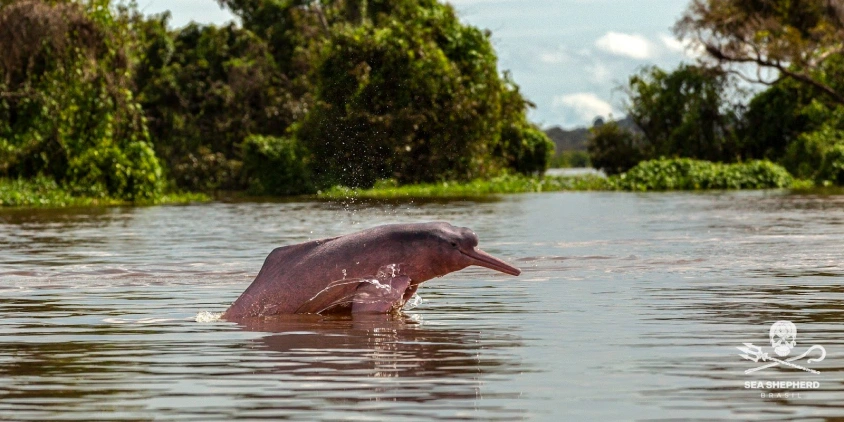
The stewardship of these magnificent mammals is not left to nature alone. Organizations such as the Mamirauá Sustainable Development Institute, Sea Shepherd Brazil and WWF engage in diligent monitoring and conservation efforts, ensuring these dolphins thrive amidst the challenges they face . Their work highlights the crucial role of guardianship in preserving the delicate web of life in this region.
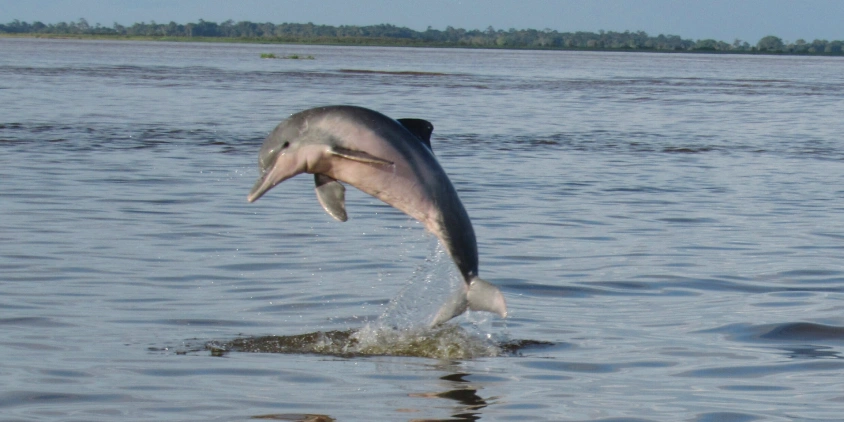
Yet, these guardians of the Amazon face myriad threats, from habitat destruction and pollution to the harsh reality of climate change, which has brought severe droughts and water level fluctuations, altering the very essence of this lush landscape.
A Tragic Turn Of Autumn 2023
In the first days of October 2023, an unsettling silence must have fallen upon Lake Tefé. This silence was the harbinger of a grim discovery: the lifeless bodies of over 150 river dolphins floating listlessly on the water’s surface . Researchers from the Mamirauá Institute for Sustainable Development were among the first to witness this heartbreaking scene .
The urgency of the situation prompted immediate action. Conservationists and biologists swiftly gathered to investigate, collecting the dolphins for necropsies to determine the cause of death. These examinations revealed the harsh impact of the environmental conditions – a severe drought in the Amazon, coupled with the effects of climate change and El Niño, leading to devastatingly high temperatures in Lake Tefé’s waters .
The following month, Lake Coari, sharing the same ecological system, echoed this tragedy. Here, 120 river dolphins met a similar fate, amplifying the ecological alarm bells already rung by Lake Tefé’s incident .
The UFAM university team and Sea Shepherd Brazil, a non-profit for the conservation of aquatic mammals, took the lead in investigating the dolphins’ deaths, later joining forces with Chico Mendes Institute for Biodiversity Conservation and other partners.
While drought is the main reason the lakes had shrunk so much, with the water temperature reaching more than 40 degrees Celsius, the cause of such a sudden and mass death of dolphins was not immediately apparent: these droughts are common in the context of the Amazon. It could have been heat, but we also wondered if it could’ve been water contamination, something that affected the fish, due to an algae bloom which is toxic for fish. However, one thing was certain: some of them died because of direct human factors.
Overall, experts highlighted the role of global climate patterns in exacerbating the drought, while marine biologists pointed to the vulnerability of river dolphins to sudden environmental changes .
Satellite Insights Into The Dolphins’ Tragedy
Upon learning of the distressing news from Lake Tefé, the EOS Data Analytics team was deeply moved. This profound shock transformed into a determined quest to glean additional insights from satellite imagery of the area, hoping to uncover clues that could shed light on this environmental calamity.
Our investigation of the Lake Tefé incident spanned satellite images captured on September 6, September 22, October 8, and October 24 using EOSDA LandViewer, a tool for live satellite imagery analysis.
Analysis of these images revealed startling changes.
The Amazon River, in the vicinity of Lake Tefé, appeared increasingly murky over time, and the overall area of the river visibly diminished. This satellite observation also reveals an evident algal bloom along the lake’s edges, a critical detail in understanding the evolving crisis.

Further analysis involved a land/water spectral view, combining Near-Infrared (NIR), Short-Wave Infrared (SWIR1), and Red bands. This technique is particularly effective in distinguishing between land and water, as water absorbs more NIR and SWIR1 light.
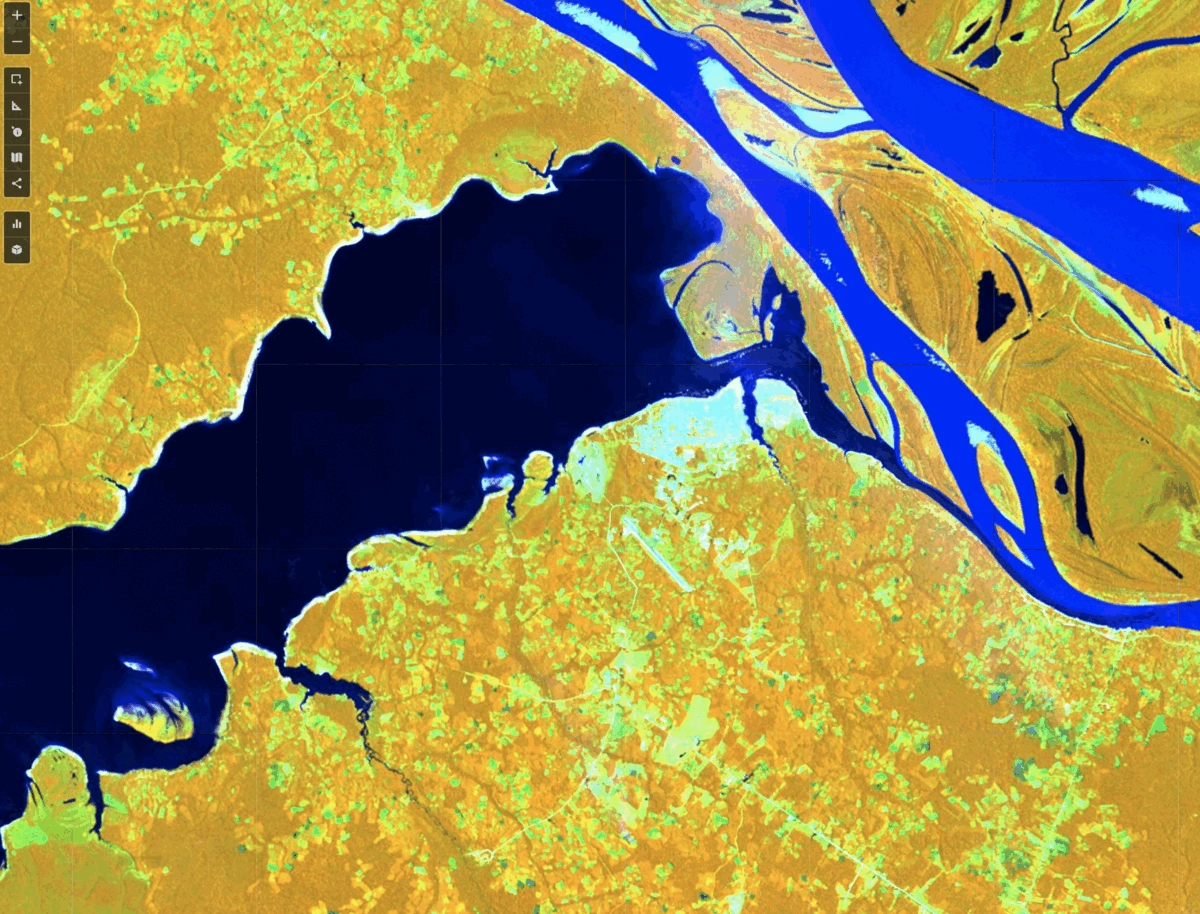
The results were telling: the areas around Lake Tefé and the adjoining Amazon River section showed signs of decreasing in size and becoming much shallower.
The land/water spectral view offered a visual representation of the environmental alterations, adding a layer of detail to our comprehension of the evolving crisis.
After shifting focus to Lake Coari following the events of November, our satellite analysis employed Sentinel images from September 5, October 5, October 25, and November 14. The natural view of the water body also indicated a significant reduction in water levels and a noticeable shrinking in size. Additionally, extensive algae presence was observed along the lake’s edges. In some areas, the water was so shallow that the lakebed became visible, while other parts of Lake Coari appeared murky. By mid-November, there was a visible improvement in these conditions.
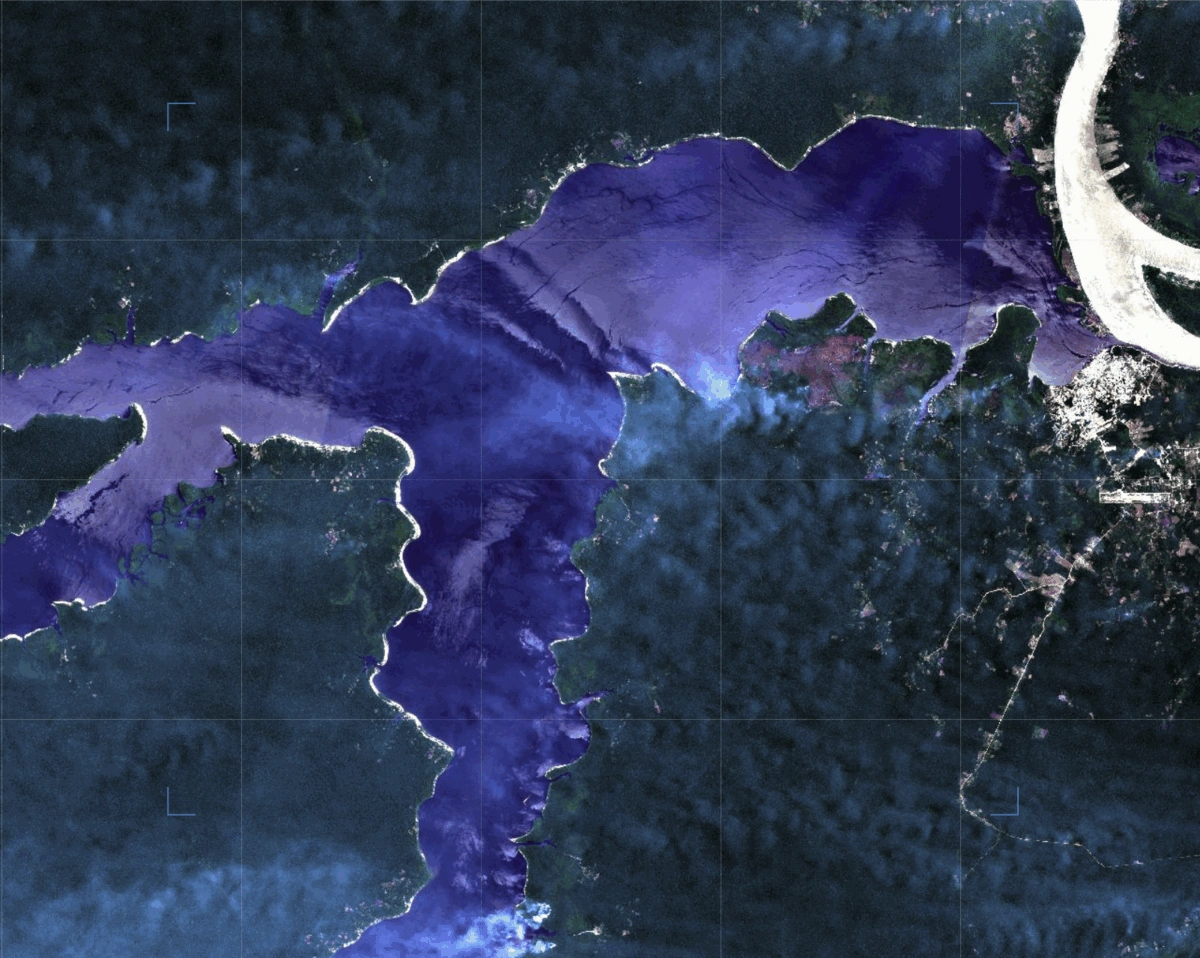
The NDVI (Normalized Difference Vegetation Index) representation provided a clearer perspective of these changes. Since NDVI measures the greenness and the density of the vegetation, in this case, it revealed the impact of the dry weather not only on the water levels but also on the surrounding forests. The algae bloom was so intense that its NDVI levels in several places matched those of the nearby forests.
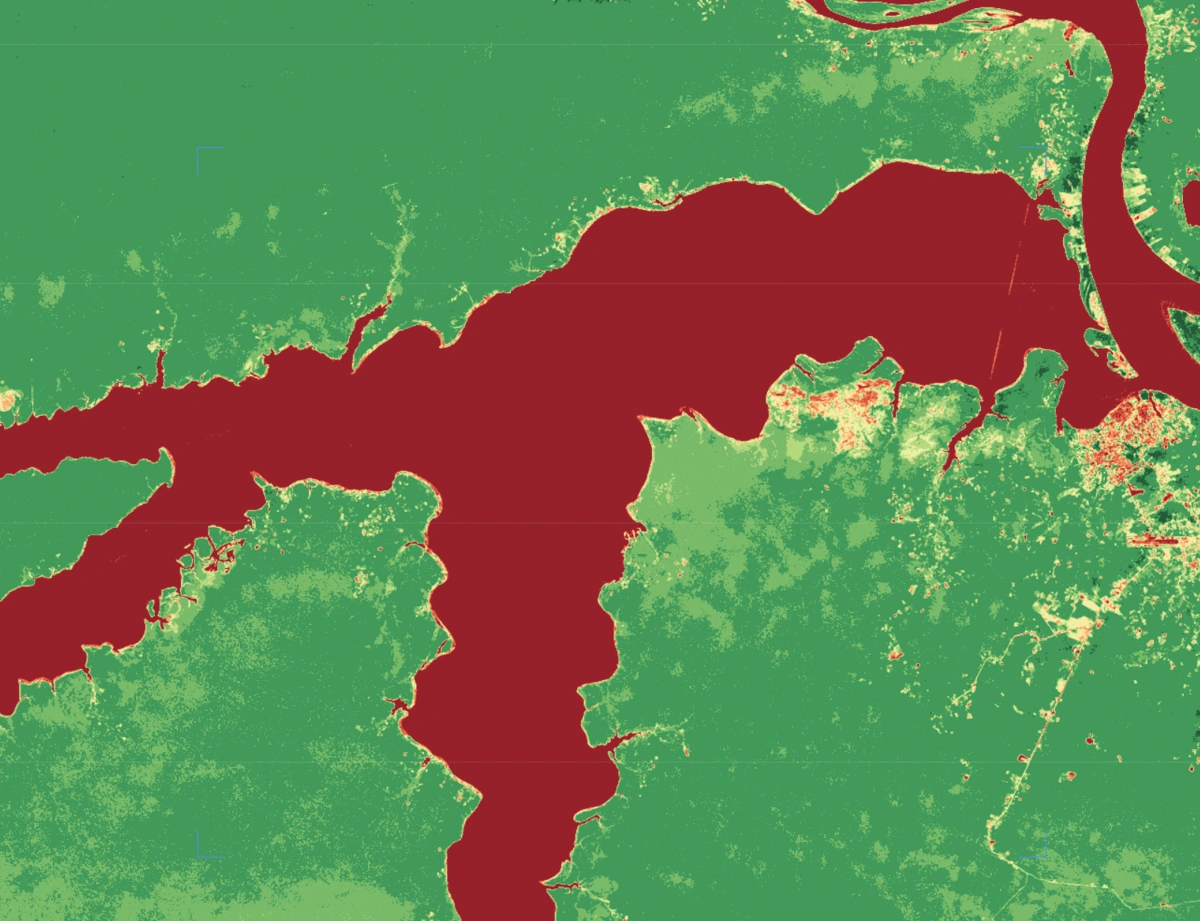
While the natural view indicated a rise in water levels by mid-November, the NDVI map also showed that the algae remained, signifying a persistent impact on the lake’s ecosystem.
Complementing these observations, historical data graphs painted a worrying climatic picture. Over recent months, the temperature in the region consistently hovered above the 5-year average, while humidity levels were notably lower. These conditions likely contributed to the drastic reduction in water levels and the increase in water temperature, creating a hostile environment for the river dolphins.
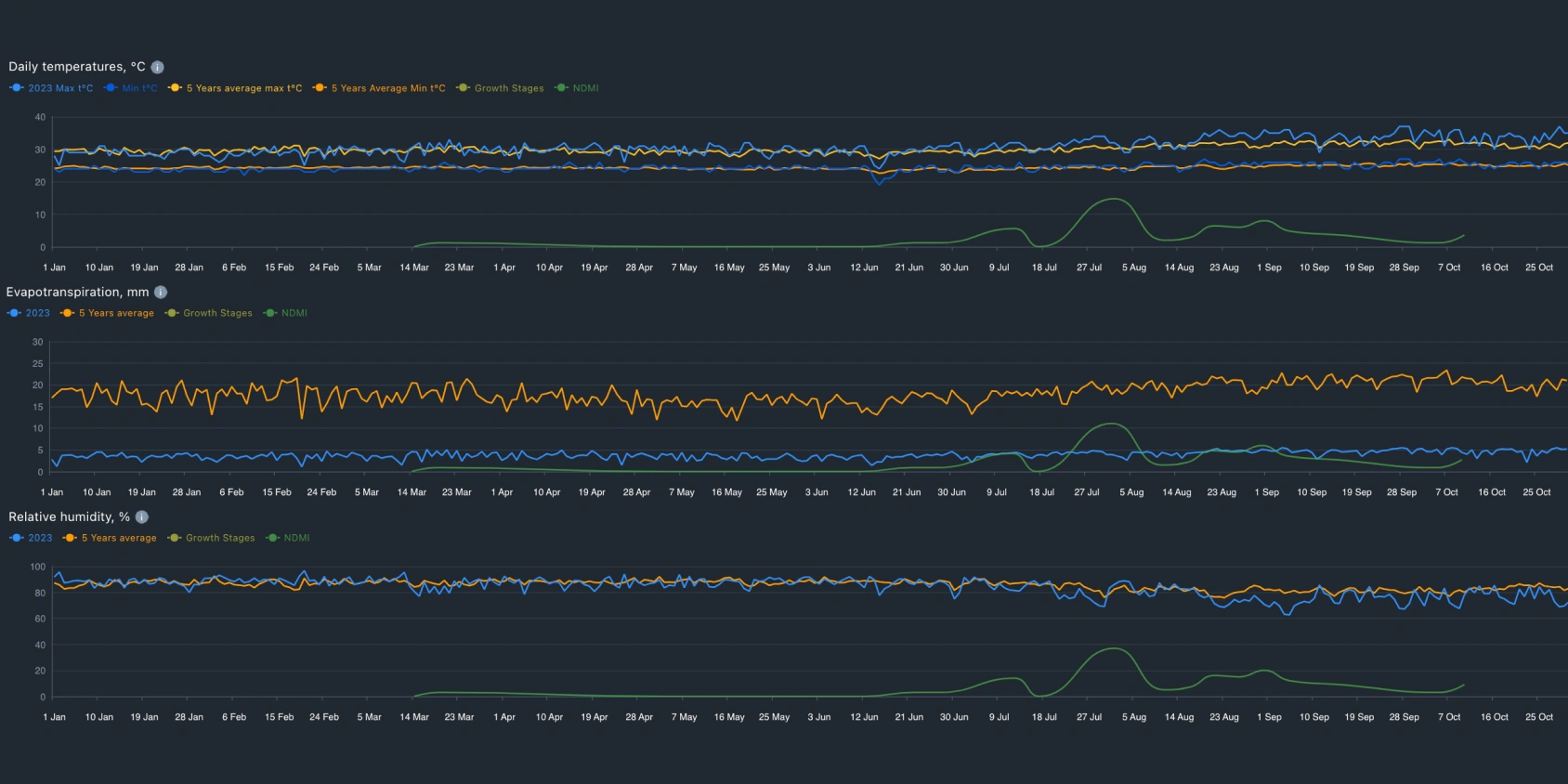
Analytical tools like EOSDA LandViewer and EOSDA Crop Monitoring not only serve as diagnostic instruments for immediate changes but also act as sentinel indicators of broader ecological health. Moving forward, their continued application will be crucial for monitoring, understanding, and ultimately mitigating the impacts of environmental challenges on aquatic and terrestrial ecosystems alike.
As it later appeared, the algae bloom could not have been one of the leading causes for the tragedy in Lake Coari, at least for dolphins.
The whole picture turned out to be much more intricate.
Protecting The Future Of Amazon’s Dolphins
To safeguard the future of Amazon’s dolphins, it’s crucial first to understand the reasons behind their massive deaths, and several weeks after the tragedy, the situation starts to become somewhat comprehensible.
The Amazon basin naturally ‘breathes’ during wet and drought seasons, but the record drought of 2023 was unprecedented. While this extreme weather alone was the catalyst of the consequent tragedy with the dolphins in Tefé and Coari, the key causes of their massive demise are yet to be determined. Currently, there are a few hypotheses.
One hypothesis is that the drastic daily temperature changes observed in water bodies during autumn 2023 could have stressed the dolphins’ physiological limits. Weather reports revealed shifts of more than 10 degrees in one day, a sudden change which can affect the weaker individuals and provoke the deaths.
The second hypothesis can revolve around other causes, such as the algae bloom, particularly the Euglena Sanguinea. Though not directly harmful to dolphins, the algae are known to be potentially toxic to fish, being likely the lead source of the high levels of fish deaths in many parts of the Amazon during this drought season. It is, however, not proven that it could indirectly affect dolphin health if they consume these affected fish: an investigation with the collected bodies is still being undertaken by the involved organizations to identify the likely natural cause of death to these animals.
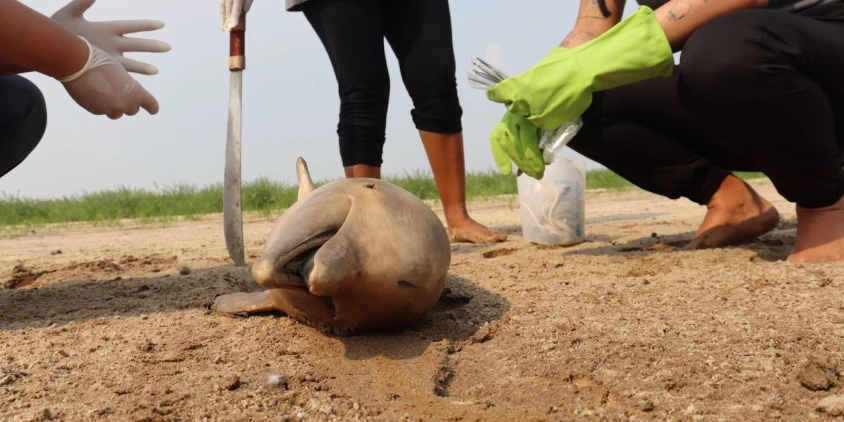
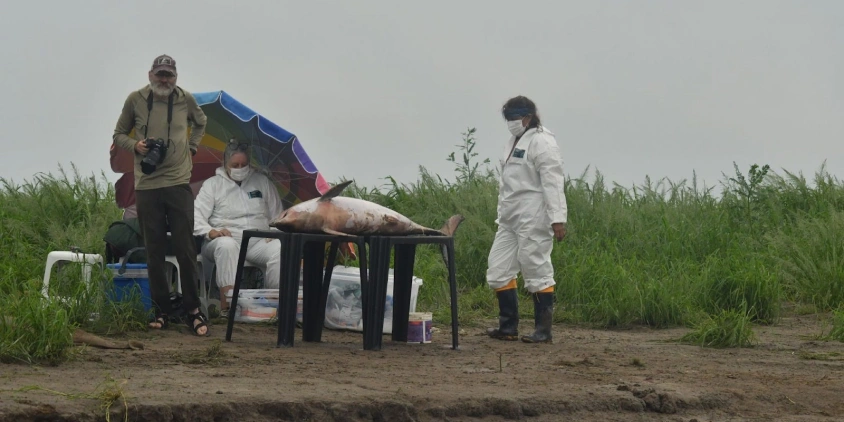

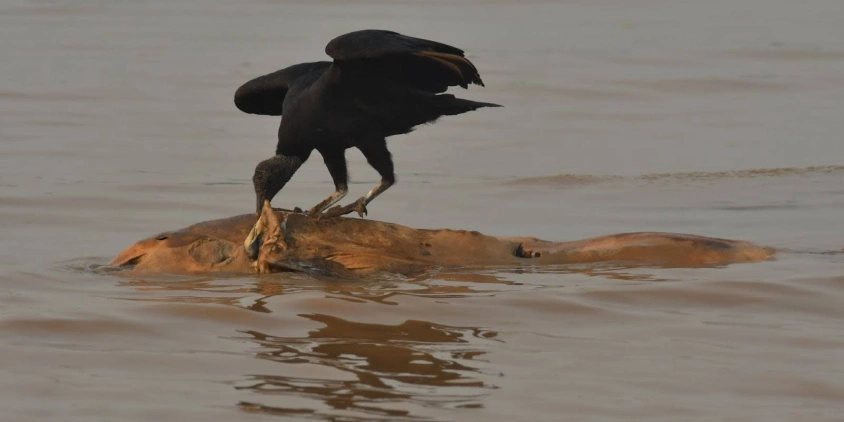
But one thing that is certain is that regardless of the deaths by natural causes, another phenomenon brought by this extreme drought is a higher level of human interaction. During droughts, the river lakes like Tefé and Coari drastically shrink, creating bottleneck zones near the Solimões river. These areas become densely populated with fish and dolphins, attracting intensive fishing activities. The close proximity and increased interaction between dolphins and fishermen often result in accidental entanglement in fishing nets and, in some cases, deliberate harm to the dolphins. Approximately 10% of dolphins found dead showed signs of human interaction, including entanglement, harpoon marks, and mutilation.
Nathalie Gil, President of Sea Shepherd Brazil, earlier revealed that fishermen also tend to use dolphins as bait to catch piracatinga, a medium-sized catfish originating from the Amazon and Orinoco basins. In response, the Brazilian government reinstated a 2014 moratorium on piracatinga fishing on July 2, 2023, as an indefinite measure to safeguard the river dolphins. However, due to the lack of proper monitoring, illegal fishing persists .
The emergency is over for now, but it will happen again. We must identify the exact reasons for these dolphin deaths to effectively direct our limited efforts and resources in the future, aiming to minimize or prevent such incidents. Though one thing we know is effective and can be implemented immediately: increasing surveillance on the river and enhancing law enforcement to fight direct deaths caused by human interaction during these events of extreme crisis.
Organizations such as Sea Shepherd Brazil, the Mamirauá Institute for Sustainable Development, and WWF bring hope that future ecological disasters might be averted. Their ongoing research, advocacy, and fieldwork are vital in understanding and protecting dolphin populations, thereby contributing significantly to preventing such crises .
Potentially helpful to these investigations and conservation efforts is the use of advanced technologies like AI-powered satellite data analytics. In this instance, EOS Data Analytics was capable of providing a post-mortem environmental analysis of the tragedy. However, the true potential of such technology lies in its ability to predict and prevent future crises. Capabilities range from monitoring poacher activities to tracking algae dynamics, offering early warnings, and enabling proactive intervention in environmental emergencies.
Our vision embodies the hope that with the right tools and dedication, humanity can protect the remaining dolphins in the Amazon and prevent similar crises worldwide. We must bring together space technology and environmental conservation efforts to maintain the fragile harmony of life on our planet.
This Story of Impact was created following EOSDA’s vision to make space tech a global driver of sustainability on Earth. If you wish to share a story that relates to this idea and believe our solutions can help develop it, please contact us via pr@eosda.com.
About the author:
Maksym Sushchuk is at the forefront of realizing EOSDA's vision to make space tech a global driver of sustainability on Earth. He has over 15 years of experience in journalism and content creation for prominent Ukrainian startups, charitable funds and ESG businesses. As Head and Co-founder of PR Army Maxim brings attention to the human and social tolls of the aggression against Ukraine.
Recent articles

Analyze 2025 & Plan Your Best Year Yet: LandViewer Christmas Offer
It’s the most wonderful time of the year! The Christmas holidays are here, and so is your chance to analyze 2025 and plan a prosperous 2026 with more affordable Pro plans in LandViewer.

EOSDA Models Climate Change Impact On Sugarcane Yields
EOSDA modeled future temperature, rainfall, and other climate impacts on Veracruz sugarcane. The results help growers plan long-term adaptation strategies, including timing, varieties, and irrigation.

EOSDA LandViewer Black Friday Sale: Exclusive Offers & Giveaway
This Black Friday, LandViewer offers new users the chance to save on monthly plans, get extra months with yearly subscriptions, and participate in a free annual plan giveaway.